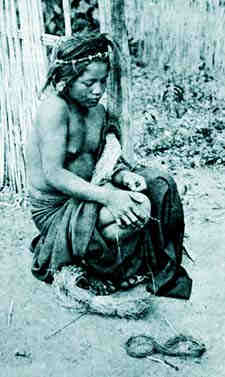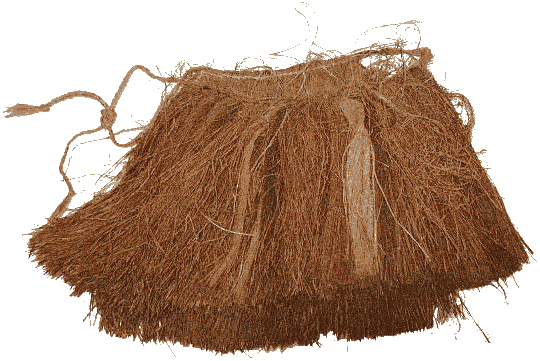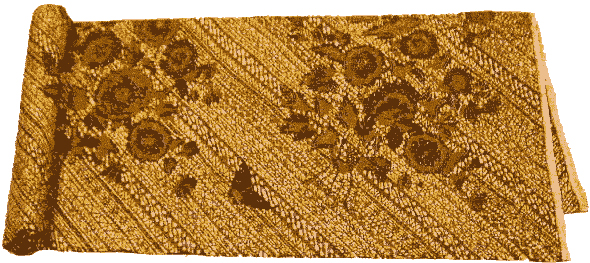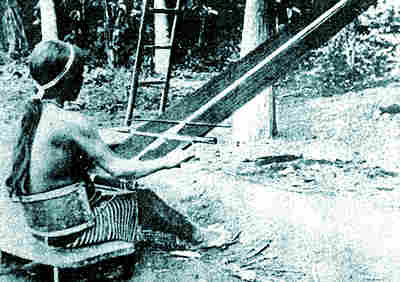Textiles and Ornamentation
Textiles
One of the earliest textiles used in the Philippines is still made of beaten bark, a technology which the Ta-p'en-k'eng, or proto-Austronesians, of 5,000 years ago seem to have brought with them wherever they went. While many people are under the impression that bark can only be used to make simple garments like the skirt below, in fact Austronesians and Polynesians have been weaving true textiles of it for many millennia. Filipino tapa, as this cloth is called, is made of the soaked and hammered inner bark of Ficus and Artocarpus trees, and is generally not as fine as that of the Polynesians.
At the time the Spanish arrived, Filipinos were spinning and weaving fabrics using two materials besides tapa: cotton and abaca. Also known as "Manila hemp," the abaca plant is actually a small, inedible species of banana, Musa textiles. The strong fibers of the stalk are stripped off primarily to make rope, but many Filipinos also make cloth of it; the beautiful clothing of the Bagobo, for instance, is woven of abaca. It makes an extremely durable fabric, although it is not nearly as soft as cotton.
Filipino fabrics are tye-died using wax bindings by two different processes: ikat and tnalak. In both, the dye is applied prior to the actual weaving; tnalak appears to be the more robust method, being capable of producing naturalistic figures, and is mostly used in the south on abaca cloth. Embroidery and decoration with bells, beads, and special threads are also popular. While geometric patterns predominate, many groups also employ stylized human and animal figures to narrate myths and tales within their fabrics. Even where naturalistic figures are forbidden, as in Muslim areas, geometric figures often have implied meanings, such as the Maranao "serpent" S.
From the hundreds of clay spindle whorls found in widely separated Filipino archaeological sites, it is evident that weaving has been around for quite some time. Many ancient techniques, such as tie-dying and the use of the back-strap loom, are still in use today.
The use of cotton came later, and probably originated in India. Cotton textiles are quite widespread, although it is primarily grown and used by lowland peoples.
Some coastal peoples, especially the Aklanon, also make a fine cloth from a pineapple leaf fiber called piña, that was introduced from America.
The basic item of Filipino clothing is the breechclout or g-string, originally and often still made of tapa bark cloth. Men added a kind of coat or jacket, sometimes made of palm or grass, to their formal attire long before the Spanish arrived. Finally, when the Moslems came, they persuaded many southern groups of the stylishness of cloth trousers.
Women everywhere generally wear at least a simple wrap-around skirt called a tapis over the breechclout. Many also wear jackets similar to those of the men, and in quite a few areas sarongs are worn.
Internal trade has always been a feature of the Philippines, and this has allowed the various groups to specialize in the manufacture of different things. Not all Filipino peoples are weavers, but all have a need for cloth. Thus it is not at all uncommon to find members of one group wearing or being buried in textiles that were quite evidently manufactured by people of another group.





